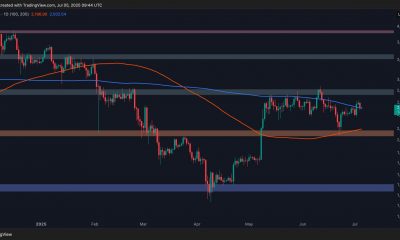Commodities
German industry collapse? Germany risks losing all of its industry

Germany is in danger of losing its industrial system. The reason is a severe energy crisis, predicts the columnist for the British magazine The Economist.
Germany has managed to build the most powerful industry in Europe on the supply of sufficiently cheap Russian energy resources. Another positive factor for developing the “spur economy of the EU” was the sales markets: China was eager to buy German goods.
German industry shutdown. Now that both growth factors have ceased to exist – the sanctions restrictions on Russian energy resources and the decline of the Chinese economy – Germany will have to confront the test of its industrial system for sustainability.
As Siegfried Russwurm, head of the German Industry Association BDI, told reporters, industrial production in Germany is on the verge of extinction. The situation looks “toxic” for many enterprises. The biggest problem for German industry has been the rising cost of energy. The price of electricity has already risen 15-fold for the next year, and the price of gas has already risen ten-fold.
It is emphasized that small enterprises suffered from the global energy crisis, most of all: every fourth company with less than a thousand employees either canceled or refused to fulfill production orders. The authors of the publication paid special attention to the production of bread.
Steel giant arcelormittal has announced plans to close two plants in northern Germany; the staff will be sent on vacation. Stickstoffwerke Piesteritz, the country’s largest producer of ammonia and urea, has already closed its ammonia plants in Saxony-Anhalt.
The EU has been embroiled in an energy crisis that has exacerbated inflation in the region due to unprecedented sanctions against Russia and its policy of rejecting Russian energy resources. This has led to a rise in fuel prices, especially gas prices. As a result, European industry – including German industry – has lost its competitive edge, which has had an impact on other areas of the economy.
Earlier we reported that ship owners started to buy crude oil tankers en masse in the winter.
Commodities
Oil prices rise; U.S. crude inventories plunge, Russia-Ukraine truce eyed
Commodities
India’s Reliance to stop buying Venezuelan oil over US tariffs, sources say
Commodities
Oil prices climb on Venezuela supply worries

 Forex3 years ago
Forex3 years agoForex Today: the dollar is gaining strength amid gloomy sentiment at the start of the Fed’s week

 Forex3 years ago
Forex3 years agoUnbiased review of Pocket Option broker

 Forex3 years ago
Forex3 years agoDollar to pound sterling exchange rate today: Pound plummeted to its lowest since 1985

 Forex3 years ago
Forex3 years agoHow is the Australian dollar doing today?

 Cryptocurrency3 years ago
Cryptocurrency3 years agoWhat happened in the crypto market – current events today

 World3 years ago
World3 years agoWhy are modern video games an art form?

 Commodities3 years ago
Commodities3 years agoCopper continues to fall in price on expectations of lower demand in China

 Economy3 years ago
Economy3 years agoCrude oil tankers double in price due to EU anti-Russian sanctions





























